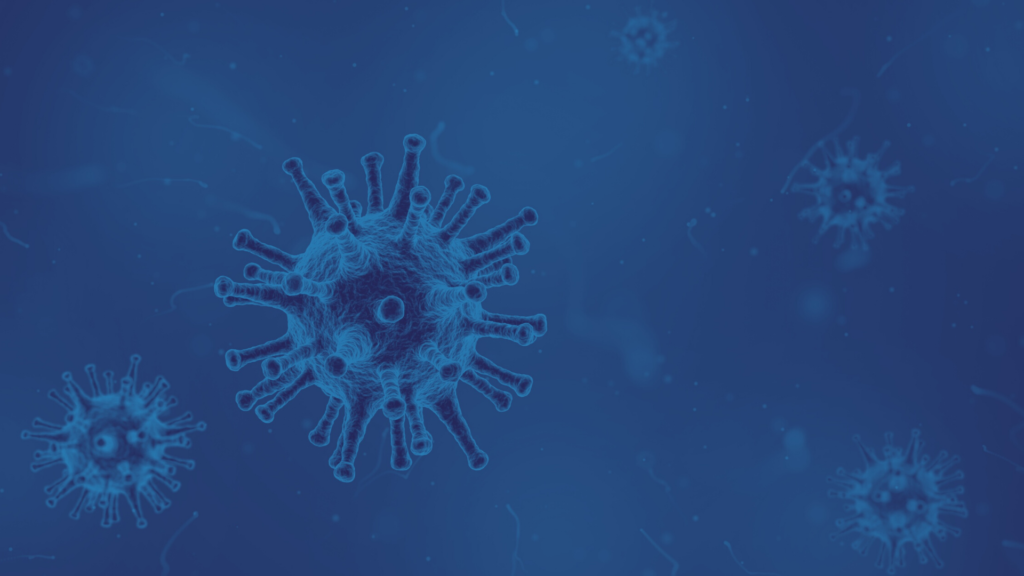i-CONSENT Project brings science and health closer to society by improving the communication between citizens and professionals. Initially, the Project was designed to make informed consent in clinical research more comprehensible to the participant. However, COVID-19 pandemic has opened a new window that allows extrapolating these efforts to make health information, whose circulation has intensified fiercely during the past month, more understandable to society in general.
During the following weeks, i-CONSENT will be publishing a series of posts to try to contribute to the current health emergency situation. This first post is dedicated to those big concepts that are all around our newspapers, social media or daily conversations and we might have troubles understanding. Welcome to the i-CONSENT COVID-19 glossary of terms.
Airborne transmission. Some infectious diseases such as COVID-19 may be transmitted person to person through ‘Airborne transmission’. In this case, viruses coming from an infected person (I.e. after coughing or sneezing) remain alive suspended in air for some time and can infect other persons.
Asymptomatic. An infected person with no COVID-19 symptoms. In the early stages of the infection, a person may still not be symptomatic.
Attack rate. The proportion of the population infected with COVID-19 to date
Bacteria are microscopic living organisms that can be found everywhere. They can be dangerous and cause infections or beneficial as in the fermentation process in wine.
Case-fatality rate. Number of deaths with relation to the number of people infected with COVID-19 within a defined time period. Sometimes called lethality.
See the difference with mortality rate.
Community spread. The spread of a contagious disease to individuals in a particular geographic location who have had no contact with other infected individuals or travelled to an area where the disease has documented cases.

Comorbidity. More than one disease or condition is present in the same person at the same time. i.e. Having diabetes or heart problems when being infected with COVID-19.
Confirmed case. A person with laboratory confirmation of COVID-19 infection, irrespective of clinical signs and symptoms.
Contact tracing. Method for controlling the COVID-19 outbreak by searching, identifying and follow-up of people who may have been in contact with an infected case.
Contagion rate. Rate of infection transmission of COVID-19 by direct contact.
Contingency plan. System of measures and steps designed to rapidly tackle emergency situations and disasters.
Coronavirus. A family of viruses that cause different diseases in the human species, most of them mild.
Epidemic. An epidemic is an outbreak of disease that spreads quickly and affects many individuals at the same time.
See difference with pandemic.
Epidemic curve. An epidemic curve shows progression of illnesses in an outbreak over time (day, week, or month).
False negative. Occurs when the test result is negative in a person who is actually infected. Every test has a number of false positives and negatives. The less you have of both, the more powerful the test is.
False positive. Occurs when the test result is positive in a person who is not actually infected. Every test has a number of false positives and negatives. The less you have of both, the more powerful the test is.

“Flattening the curve”. Flattening the curve consists of delaying the highest point of number of cases, distributing it over a longer period of time. This allows health workers and hospitals to have more time to prepare and avoid saturation of health centers.
Incubation period. The time between the virus’ entrance in the body and the manifestation of the symptoms of the disease.
MERS-CoV. Stands for Middle East Respiratory Syndrome (MERS), a nearly inexistent coronavirus respiratory disease caused by the MERS-CoV. It was first reported in Saudi Arabia in 2012 and has since spread to more than 27 other countries, according to the World Health Organization.
Mortality rate. The mortality rate is the proportion of deaths from a specific disease over the total population during a period of time.
See difference with case fatality rate.
Outbreak. A sudden rise of a disease.
Pandemic. A pandemic is the global outbreak of a disease. Pandemics are generally classified as epidemics first and after spreading to every part of the world they are called a pandemic. The World Health Organization (WHO) declared on March 11 COVID-19 a pandemic
See the difference with epidemic.
Patient zero. A person identified as the first to become infected with an illness or disease in an outbreak.

PPE (Personal Protective Equipment) . Personal protective equipment (PPE) is the equipment designed to protect the wearer’s body from injury or infection, it includes clothing, helmets, goggles, gloves, or other.
Quarantine. The action to keep a person away from others to prevent a disease from spreading. It doesn’t necessarily last 40 days.
R0 or “R naught”. Describes how many persons an infected person will infect.
SARS-CoV-2 /COVID 19. Stands for Severe Acute Respiratory Syndrome coronavirus-2 (SARS-CoV-2) is the novel coronavirus first detected in Wuhan, China, that causes coronavirus disease 2019 (COVID-19).
Social distancing. Social distancing is an action taken to minimise contact with between individuals. We can differentiate between individual social distance actions (E.g. confinement) or collective social distance actions (E.g. multitudinous event suspension).
Suspect Case. A patient with any acute respiratory illness that has been in contact with a confirmed or probable case and in the absence of an alternative diagnosis that fully explains the clinical presentation.
Vaccine. A preparation of dead, living attenuated or fully living virulent organisms that is administered to a person to stimulate its immune system in a way that it can fight the virus if entering in contact with it again.
Virus. Simple infectious agent, which multiply in the cells of various organisms that when entering a body it makes the person or animal fill ill. Needs to live in a cell from other organisms to survive.
Zoonotic disease. Is a human infectious disease that has its origin in animals and are transmitted to humans. Zoonotic diseases can be caused by viruses, bacteria, parasites, and fungi.
Did you miss any word? Do you have any suggestions? Do not hesitate in contacting us!
